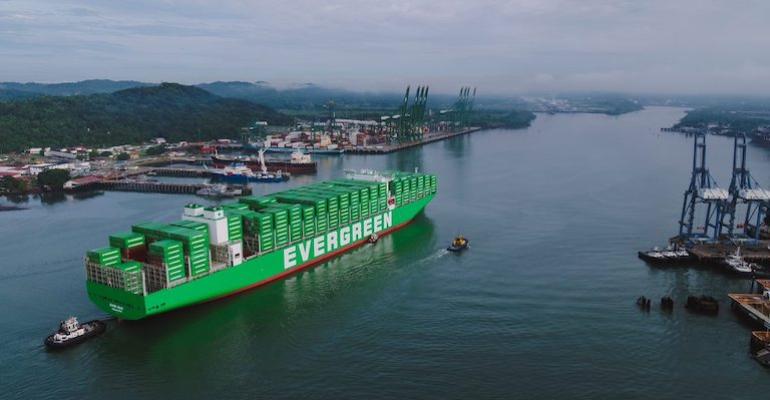As Panama continues to grapple with the worst drought in 73 years Panama Canal Authority (ACP) plans to reduce the number of booking slots to just 18 from 1 February 2024, of which five will be for Neo-Panamaxes.
Following the announcement of the new restrictions Ocean Network Express (ONE) CEO Jeremy Nixon wrote to Panama’s President Laurentino Cortizo, that ongoing delays and loading restrictions for Neo-Panamax had reached such a level of concern the container line would have consider re-routing vessels from Asia to the US East Coast via the Suez Canal.
The Panama Canal also has a 13.41 metre draught restriction in place to save water forcing containerships to either carry less cargo on Asia – US East Coast voyages or to tranship a portion of the cargo by land across Panama.
Judah Levine, Freightos' Head of Research, notes that around five Neo-Panamax containerships a day cross the Pacific bound for the US East Coast. “Authorities will reduce daily Neo-Panamax transits to 5 by February, suggesting that even at their most extreme, restrictions could still accommodate container traffic reasonably well."
This does not mean container shipping will not be impacted though and Levine told Seatrade Maritime News, “It is certainly possible that container shipping will be impacted nonetheless, in the form of some delays or higher rates.”
However, as has been well reported container shipping is facing a period of serious overcapacity as a record volume of newbuildings are delivered into the global fleet. “In the current state of overcapacity, carriers needing more vessels to accommodate delays caused by fewer transits could be welcome by carriers trying to manage excess supply, and therefore would likely mitigate the extent of any rate increase for shippers,” he commented.
A similar view was taken by Glenn Koepke, GM of Network Collaboration at FourKites. “This disruption will help provide a needed bump to the steamship lines and freight forwarders who are struggling with profitability and operating margin. With the weak economic outlook lasting into mid next year at least, we anticipate this causing a bump in rates for the next 2 months and then post February, there is too much variability to predict what market conditions, route availability and economic demand will look likely.”
Listen to a recent episode of the Seatrade Maritime Podcast with Panama Canal Administrator Ricaurte Vasquez Morales
While the situation may not be critical for container shipping it could be much more serious for other types of vessels such as gas carriers, tankers and bulkers.
This week saw two gas carriers the Pyxis Pioneer and the Sunny Bright within 10 miles of the canal before they changed course, according to ship-tracking data compiled by Bloomberg.
“A diversion, via the Strait of Magellan or Cape Horn, adds about an extra 9,500 miles or 25 days more to a voyage compared to canal transit,” said Amrit Singh, Lead Analyst at LSEG Shipping Research.
The alternative is bidding for slots at auction which have skyrocketed. Japan’s Eneos Group made a winning bid $3.975 million for a transit at auction on Wednesday, in excess of a $1 million higher than the previous reported top bid of $2.85 million.
“Six LPG tankers remain at Balboa Anchorage and waiting times are about seven days on average. Transit slots continue to be auctioned to the highest bidder with typical $300,000 -400,000 prices ballooning to a record $4 million this week,” Singh added.
While Freightos’ Levine noted, “Many gas carriers began using longer alternatives to the Canal earlier in the year, spiking spot rates for those markets. These accommodations will likely increase as restrictions intensify."
The huge cost of transits at auction is effectively pricing out some owners. In its weekly report Poten warned that large tanker owners would stop using the canal.
Copyright © 2024. All rights reserved. Seatrade, a trading name of Informa Markets (UK) Limited.
Add Seatrade Maritime News to your Google News feed.  |

